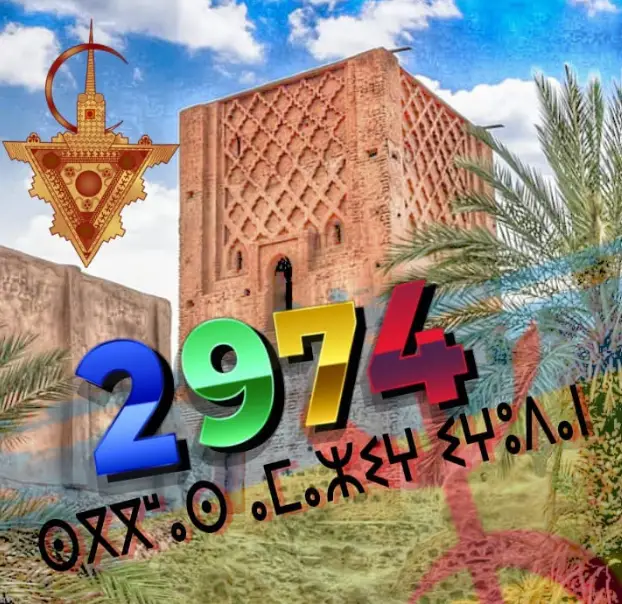Amazigh
Different Amazigh Dialects: A Comprehensive Guide

The Amazigh people, also known as Berbers, are the indigenous inhabitants of North Africa. One of the most fascinating aspects of their culture is their language, which is as diverse as the regions they inhabit. Amazigh dialects, collectively referred to as Tamazight, vary significantly across the Maghreb region, yet they share a common thread that binds the Amazigh identity together.
In this article, we explore the different Amazigh dialects, their unique characteristics, and their cultural significance, shedding light on why preserving these languages is vital for the heritage of Northern Africa.
The Diversity of Amazigh Dialects
Amazigh dialects are spoken across Morocco, Algeria, Tunisia, Libya, and beyond. Despite regional differences, these dialects belong to the Afro-Asiatic language family and share grammatical structures, phonetics, and vocabulary rooted in ancient traditions.
Some of the most prominent Amazigh dialects include:
1. Tachelhit (Shilha)
- Region: Southern Morocco
- Features: Tachelhit is widely spoken in the Souss-Massa region and is known for its rich oral poetry and storytelling traditions. It’s often referred to as the “language of the south.”
2. Tamazight (Central Atlas)
- Region: Central Morocco
- Features: Spoken by communities in the Middle and High Atlas Mountains, this dialect is integral to cultural rituals, music, and festivals.
3. Tarifit
- Region: Northern Morocco (Rif region)
- Features: Tarifit has distinct phonetics compared to other dialects and plays a significant role in the identity of the Rif Amazigh people.
4. Kabyle
- Region: Algeria (Kabylie region)
- Features: Kabyle is one of the most widely spoken Amazigh dialects in Algeria and has a strong literary tradition, with many poems and songs written in this language.
5. Tuareg (Tamasheq)
- Region: Sahara Desert (Mali, Niger, Algeria, Libya)
- Features: Tamasheq is spoken by the nomadic Tuareg people and is written using the Tifinagh script, which has ancient roots.
6. Shawiya (Chaoui)
- Region: Eastern Algeria (Aurès Mountains)
- Features: Shawiya is known for its close ties to Amazigh heritage and is commonly used in cultural ceremonies.
The Tifinagh Script
One of the most striking aspects of Amazigh dialects is their connection to the Tifinagh script. While most Amazigh languages are primarily spoken, Tifinagh has been used for centuries to write these dialects. Today, the script is being revived in educational and cultural settings, particularly in Morocco, where it has been incorporated into official signage and school curricula.
Challenges Facing Amazigh Dialects
Despite their cultural importance, Amazigh dialects face several challenges:
- Suppression: Historically, colonial and post-colonial governments in North Africa marginalized Amazigh languages in favor of Arabic and French.
- Urbanization: Younger generations in cities often adopt dominant languages for convenience, leaving Amazigh dialects at risk of decline.
- Limited Resources: Educational materials and media content in Amazigh dialects remain scarce, hampering efforts to teach and preserve these languages.
Efforts to Preserve Amazigh Dialects
In recent years, there have been significant strides toward recognizing and preserving Amazigh languages:
- Official Recognition: Tamazight was declared an official language in Morocco (2011) and Algeria (2016), ensuring greater visibility and support.
- Cultural Revivals: Festivals, music, and crafts celebrating Amazigh heritage have gained popularity worldwide.
- Education: Schools in Morocco and Algeria now offer courses in Tamazight, ensuring future generations can learn and use these dialects.
The Cultural Significance of Amazigh Dialects
Amazigh dialects are more than just a means of communication; they are a repository of the Amazigh people’s history, values, and identity. From oral traditions to Amazigh crafts and music, these dialects provide insight into their worldview and connection to their environment.
Oral Storytelling
Storytelling is a cornerstone of Amazigh culture. Elders use their dialects to pass down myths, legends, and moral lessons, ensuring that their heritage is preserved through generations.
Amazigh Women’s Role
Women, often the primary caregivers and cultural keepers, play a critical role in teaching children their native dialects. Through lullabies, folktales, and songs, they instill linguistic and cultural pride.
How You Can Support Amazigh Languages
- Learn an Amazigh Dialect: Online courses, apps, and community classes are increasingly available.
- Support Amazigh Artisans: Purchase Amazigh crafts, such as jewelry and rugs, which often feature symbolic representations of their language and culture.
- Advocate for Awareness: Share information about Amazigh dialects and their significance on social media.
Conclusion
The Amazigh dialects are a testament to the resilience and diversity of the Amazigh people. By understanding and preserving these languages, we honor not only the Amazigh community but also the broader cultural heritage of Northern Africa.
As more people learn about and embrace these dialects, the Amazigh voice will continue to thrive, ensuring that their rich legacy endures for generations to come.
